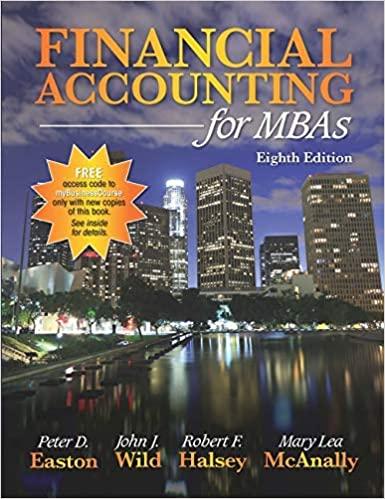
Assume an investor acquired 100% of the voting common stock of an investee on January X 1, 2012 in a transaction that qualifies as a business combination. As a result of the acquisition, the investor recognized no goodwill and no bargain purchase gain in the post- acquisition consolidated financial statements (i.e., all of the resulting Acquisition Accounting Premium relates to identifiable net assets). The investor uses the equity method to account for its pre-consolidation investment in the investee. In addition, there are no intercom-pany transactions between the investor and investee. The following summarized pre-consolidation financial statement information is for the year ending December 31, 2019: Investee $ 306,000 Income Statement Revenues Equity Income Expenses Investor $ 2,216,000 132,000 (1,849,000) (153,000) Balance Sheet. Equity Investment All other assets $ 252,000 4,550,000 $ 0 316,000 Liabilities Common stock and apic. Retained earnings 2,798,000 789,000 1,031,000 156,000 71,000 130,000 Calculate total Assets in the consolidated income statement for the year ending December 31, 2019. Assume an investor acquired 100% of the voting common stock of an investee on January X 1, 2012 in a transaction that qualifies as a business combination. As a result of the acquisition, the investor recognized no goodwill and no bargain purchase gain in the post- acquisition consolidated financial statements (i.e., all of the resulting Acquisition Accounting Premium relates to identifiable net assets). The investor uses the equity method to account for its pre-consolidation investment in the investee. In addition, there are no intercom-pany transactions between the investor and investee. The following summarized pre-consolidation financial statement information is for the year ending December 31, 2019: Investee $ 306,000 Income Statement Revenues Equity Income Expenses Investor $ 2,216,000 132,000 (1,849,000) (153,000) Balance Sheet. Equity Investment All other assets $ 252,000 4,550,000 $ 0 316,000 Liabilities Common stock and apic. Retained earnings 2,798,000 789,000 1,031,000 156,000 71,000 130,000 Calculate total Assets in the consolidated income statement for the year ending December 31, 2019







